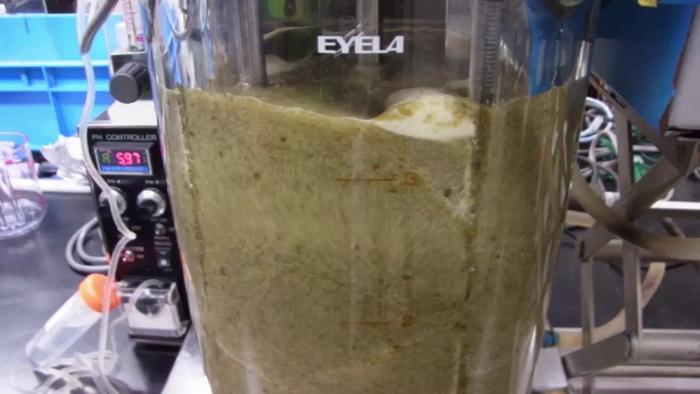A recent genomic exploration into the hydrogen-producing bacteria known as Vibrionaceae has unveiled groundbreaking insights regarding their genetic diversity and potential for biofuel production. Historically acknowledged for their association with marine environments and occasional pathogenicity, these bacteria are now garnering attention due to their unique capacity to produce hydrogen gas from formate fermentation. This shift in perspective might revolutionize green energy applications, providing a sustainable alternative to traditional fossil fuels.
The research team, spearheaded by Professor Tomoo Sawabe from Hokkaido University’s Faculty of Fisheries Sciences, in collaboration with scientists from the National Institute for Interdisciplinary Science and Technology, India, and the Federal University of Rio de Janeiro, Brazil, embarked on a quest to understand the underlying mechanisms facilitating this remarkable bioenergy production. Their results, which were meticulously documented in the peer-reviewed journal Current Microbiology, present a compelling case for the consideration of Vibrionaceae as biofuel producers.
The study took a comprehensive approach by examining all 16 recognized species within the Vibrionaceae family. Traditionally, these bacteria have not received significant interest from biofuel researchers primarily due to their association with pathogenic strains, including those responsible for cholera. However, the investigation aimed to highlight their lesser-known attribute — the ability to generate substantial hydrogen volumes through the metabolic breakdown of formate.
At the heart of this biochemical process lies the Hyf-type formate hydrogenlyase (FHL) gene cluster, critical for the catalytic conversion of formate into hydrogen and carbon dioxide. The researchers conducted genome sequencing on the species, which often thrive in symbiotic relationships with deep-sea organisms. They honed in on the specific structural and sequential characteristics of the FHL gene clusters, discovering that these clusters exhibit striking diversity among different Vibrionaceae species.
Professor Sawabe elaborated on this discovery, indicating that the analyses produced unexpected revelations regarding the range and functionality of the FHL gene clusters. The complexity of these genetic components parallels a similar biochemical system found in Escherichia coli, albeit Vibrionaceae showcase a significantly enhanced capacity for hydrogen production. This underlines an evolutionary advancement that may have implications for understanding the genetic basis of energy metabolism in other microbial species.
In their findings, the researchers identified two novel types of FHL gene clusters, thus increasing the total number to six distinct variants residing within the Vibrionaceae family. This genetic diversity is postulated to stem from speciation events as these bacteria have adapted to occupy various ecological niches. The implications of this genetic plasticity could have far-reaching consequences for biofuel technology and hydrogen production.
Hydrogen fermentation and production levels exhibited notable variations across the different FHL gene clusters. For instance, Vibrio tritonius, a marine species, and Vibrio porteresiae, associated with mangrove ecosystems, demonstrated the highest hydrogen output. In contrast, species like Vibrio aerogenes and Vibrio mangrovi showed considerably lower hydrogen production capabilities. These disparities illuminate the intricate relationship between genetic variations, ecological adaptations, and metabolic efficiency in hydrogen generation.
Furthermore, the study revealed a distinct correlation between hydrogen production levels and each species’ ability to absorb formate into their cellular structures. This critical discovery reinforces the notion that formate metabolism may play a pivotal role in the maintenance of fermentative hydrogen production, particularly among certain Vibrionaceae lineages. The researchers speculate that this formate detoxification hypothesis could offer insights into the evolutionary pressures motivating species to evolve heightened hydrogen productivity.
The implications of this research extend beyond merely understanding Vibrionaceae hydrogen production mechanisms. The findings could provide a foundational framework for examining hydrogen fermentation pathways in a broader spectrum of bacterial taxa. By unraveling the genetic intricacies behind hydrogen synthesis, scientists may glean insights applicable to other microorganisms, potentially enhancing the efficacy of biotechnological applications, including renewable energy sources.
As global energy demands escalate alongside environmental sustainability concerns, exploring such novel microbial pathways for clean energy production becomes increasingly vital. The potential transition towards using Vibrionaceae as biofuel candidates could pave the way for innovative biotechnologies that not only harness renewable energy but also mitigate the ecological impacts associated with fossil fuel reliance.
In conclusion, the groundbreaking research on Vibrionaceae and their unique capabilities underscores the transformative potential of microbial biology in the quest for sustainable energy solutions. As scientists continue to delve into the genetic intricacies of these fascinating organisms, the possibility of unlocking new avenues for clean energy production appears ever more attainable. The findings solidify the importance of biodiversity in microbial systems and point to the urgent need for further research into biofuel applications rooted in natural processes.
Subject of Research: Interaction of Vibrionaceae and their genomic potential for hydrogen production
Article Title: Unexpected diversity in gene clusters encoding formate hydrogenlyase complex machinery in Vibrionaceae correlated to fermentative hydrogen production
News Publication Date: 25-Mar-2025
Web References: DOI
References: Current Microbiology
Image Credits: Tomoo Sawabe
Keywords: Vibrionaceae, hydrogen production, biofuels, formate, gene cluster, fermentation, microbial energy, genome sequencing.




